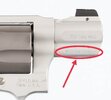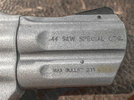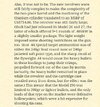halfmoonclip
Member
- Joined
- Feb 4, 2011
- Messages
- 2,764
Did a search, without much satisfaction. Have a couple 4 Ti cylindered revos that have never given me any trouble. Full disclosure, none have a really high round count, nor have I ever gone batchit cleaning the cylinders. Learned to live with the flashmarks on the cylinder face (scrub it off, they just come back). Never used anything more aggressive than a bronze brush and Hoppes.
Anyway, have seen pictures of Smith Ti cylinders that looked like a sawtooth, really chewed up.
Any opinions/information on any of this, and how it came to pass?
I'm not really worried about my own guns, but I am curious.
Thanks in advance,
Moon
Anyway, have seen pictures of Smith Ti cylinders that looked like a sawtooth, really chewed up.
Any opinions/information on any of this, and how it came to pass?
I'm not really worried about my own guns, but I am curious.
Thanks in advance,
Moon





